Street Sweeper Armsel Striker Shotgun
$800.99
AVAILABLE IN STOCK!!
Street Sweeper Armsel Striker Shotgun—A Rare Firearm Legend
Discover the Street Sweeper Armsel Striker Shotgun
The Street Sweeper Armsel Striker Shotgun is a rare and iconic firearm, now available at Marlin Rifles Store for collectors and Class III dealers in the USA. Hilton R. Walker originally designed this 12-gauge revolving cylinder shotgun in Rhodesia (now Zimbabwe) in 1981 for riot control and combat.
Known as the Armsel Striker, Sentinel Arms Striker-12, or Cobray/SWD Street Sweeper, it gained notoriety for its unique design and formidable firepower. Wikipedia notes its success in markets like South Africa and Israel, despite its bulky drum and long reload times. Classified as an NFA Destructive Device in 1994, this shotgun is a prized collectible for enthusiasts seeking a piece of firearm history. Explore its legacy and secure yours today!
Key Features of the Street Sweeper Armsel Striker
The Street Sweeper Armsel Striker Shotgun stands out for its innovative design and robust construction. Here’s what makes it a collector’s gem:
- 12-Gauge Revolving Cylinder: Features a 12-round rotating drum, similar to a revolver, providing high capacity for a shotgun of its era. The drum is spring-wound via a front winding key, with a unique clockwork mechanism.
- 18-Inch Barrel: Meets NFA requirements for standard models, ensuring compliance while maintaining maneuverability. Some variants, like the Sentinel Arms Striker-12, offer shorter 7-inch barrels (NFA-regulated).
- Double-Action Trigger: Unlike semi-automatic shotguns, the Street Sweeper operates with a double-action trigger, rotating the cylinder via a tensioned spring after each trigger release, as noted by Rock Island Auction.
- Folding Stock: Includes a top-folding shoulder stock with a rubber buttplate, reducing overall length by 30% for compact storage or transport.
- Ribbed Polymer Grips: Ergonomic pistol grips and a forward grip enhance control, compensating for the heavy 9+ pound unloaded weight.
- Matte Black Finish: Stamped steel components with a powder-coated finish ensure durability, while the aluminum cylinder reduces wear.
- Manual Ejector Rod: Spent shells are ejected manually via a rod, with loading through a right-side port, similar to a Single Action Army revolver.
- Groove Sight: Features a grooved trench sight or fiber optic sight (Cobray models), designed for close-range engagements.
Manufactured by Cobray/SWD as a clone of the Armsel Striker, this version is marked with “S/S INC./ATL, GA/SS/12 GA.” and the Cobray logo, making it a recognizable collectible. Its rugged build and historical significance make it a must-have for serious firearm enthusiasts.
Why Choose the Street Sweeper for Your Collection?
The Street Sweeper Armsel Striker Shotgun is a unique piece of firearm history, blending innovative design with a controversial legacy. Originally adopted by the South African and Israeli police, as noted in Chester County Armory, its revolving cylinder and high capacity made it a standout for riot control and combat.
In the USA, the Cobray/SWD Street Sweeper became infamous, appearing in action films and video games, though often misrepresented as semi-automatic, per X posts. Its designation as a destructive device in 1994 by Treasury Secretary Lloyd Bentsen, following a Brady Campaign proposal, cemented its status as a rare and regulated collectible.
For collectors, the Street Sweeper offers:
- Rarity: Few remain in legal circulation due to NFA restrictions, making it a prized acquisition.
- Historical Significance: Tied to African revolutions and global law enforcement, with a colorful backstory involving espionage and controversy.
- Unique Design: The revolving cylinder and clockwork mechanism are unlike any traditional shotgun, appealing to enthusiasts of unconventional firearms.
While its heavy weight (over 10 pounds loaded) and time-consuming reload process limit practical use, its collectible value is undeniable. Add this rare shotgun to your collection today!
Legal Considerations for Owning a Street Sweeper
The Street Sweeper Armsel Striker Shotgun is classified as a Destructive Device under the National Firearms Act (NFA), per a 1994 ruling by the ATF. This designation, prompted by its “no sporting purpose” status, means ownership is heavily regulated. Key legal points include:
- NFA Registration: All Street Sweepers must be registered with the Bureau of Alcohol, Tobacco, Firearms and Explosives (ATF). Buyers must complete a Form 4 (individuals) or Form 3 (dealers) for transfer.
- Class III FFL/SOT Required: Transfers typically require a Class III Federal Firearms License (FFL) with Special Occupational Tax (SOT). Type 01, 02, and 07 dealers are limited to two Destructive Device transfers per SOT year, while Type 09 and 10 dealers are exempt.
- State Restrictions: Not legal in all states (e.g., Connecticut, Massachusetts, and New York). Buyers must verify local laws before purchasing.
- Tax Stamp: A $200 NFA tax stamp is required for individual transfers, in addition to background checks and waiting periods.
Due to these restrictions, the Street Sweeper is primarily suited for Class III dealers, collectors with proper licensing, or law enforcement agencies. Always consult with your FFL dealer and local authorities to ensure compliance. ATF guidelines provide further details.
Why Buy from Marlin Rifles Store?
At Marlin Rifles Store, we specialize in rare and high-quality firearms, offering unmatched service for collectors and enthusiasts. When you purchase the Street Sweeper Armsel Striker Shotgun, you’ll benefit from:
- Discreet FFL Shipping: We ship to your designated Class III FFL/SOT dealer in the USA, ensuring compliance with NFA regulations. Email your FFL details to marlinriflesstore@gmail.com for a seamless transfer.
- Authentic Firearms: Our Street Sweepers are genuine Cobray/SWD models, verified for authenticity and condition.
- Secure Transactions: Safe checkout with 24/7 customer support to answer your questions.
- Collector Expertise: We understand the value of rare firearms and provide detailed documentation for NFA transfers.
Order your Street Sweeper today and own a piece of firearm history!
How to Purchase the Street Sweeper Armsel Striker
Acquiring the Street Sweeper Armsel Striker Shotgun requires careful adherence to NFA regulations. Follow these steps:
- Verify Eligibility: Confirm that you or your FFL dealer hold a valid Class III FFL/SOT and that your state permits Destructive Device ownership.
- Add to Cart: Select the Street Sweeper on Marlin Rifles Store.
- Submit FFL Details: Email your Class III FFL/SOT dealer’s information to marlinriflesstore@gmail.com, using their address for shipping.
- Complete Payment: Choose from secure payment options ( hn, or cash on delivery where available).
- Track Transfer: Receive a tracking number for delivery to your FFL dealer, with ATF Form 3 or Form 4 processing to follow.
Purchases require a valid U.S. government-issued ID and compliance with federal, state, and local laws. Must be 21+ to purchase. Contact your FFL dealer to confirm their ability to accept Destructive Device transfers.
Own a Piece of Firearm History
The Street Sweeper Armsel Striker Shotgun is a rare and storied firearm, celebrated for its innovative revolving cylinder and controversial legacy. From its origins in Rhodesian conflict to its adoption by global law enforcement and its cinematic fame, this 12-gauge shotgun is a collector’s dream. Its NFA Destructive Device status adds to its exclusivity, making it a prized addition for Class III dealers and licensed enthusiasts.
Don’t miss your chance to own this legendary shotgun. Buy the Street Sweeper Armsel Striker now at Marlin Rifles Store and secure a firearm that’s as unique as it is powerful. With discreet, compliant shipping, your piece of history is just a click away. Act now to add this iconic collectible to your arsenal!
Street Sweeper Armsel Striker Shotgun and “Armsel Striker” are both names associated with a particular type of shotgun that gained notoriety due to its design and capabilities. Here’s some information about the “Street Sweeper” Armsel Striker Shotgun s
Street Sweeper Shotgun: The term “Street Sweeper” was colloquially used to refer to the Armsel Striker shotgun. It was a 12-gauge shotgun with a revolving cylinder magazine, capable of holding multiple rounds. Armsel Striker Shotgun: The Armsel Striker is a South African-made shotgun that featured a unique design. It utilized a revolving cylinder similar to that of a revolver, enabling it to fire multiple shots in quick succession without needing to manually reload between shots.
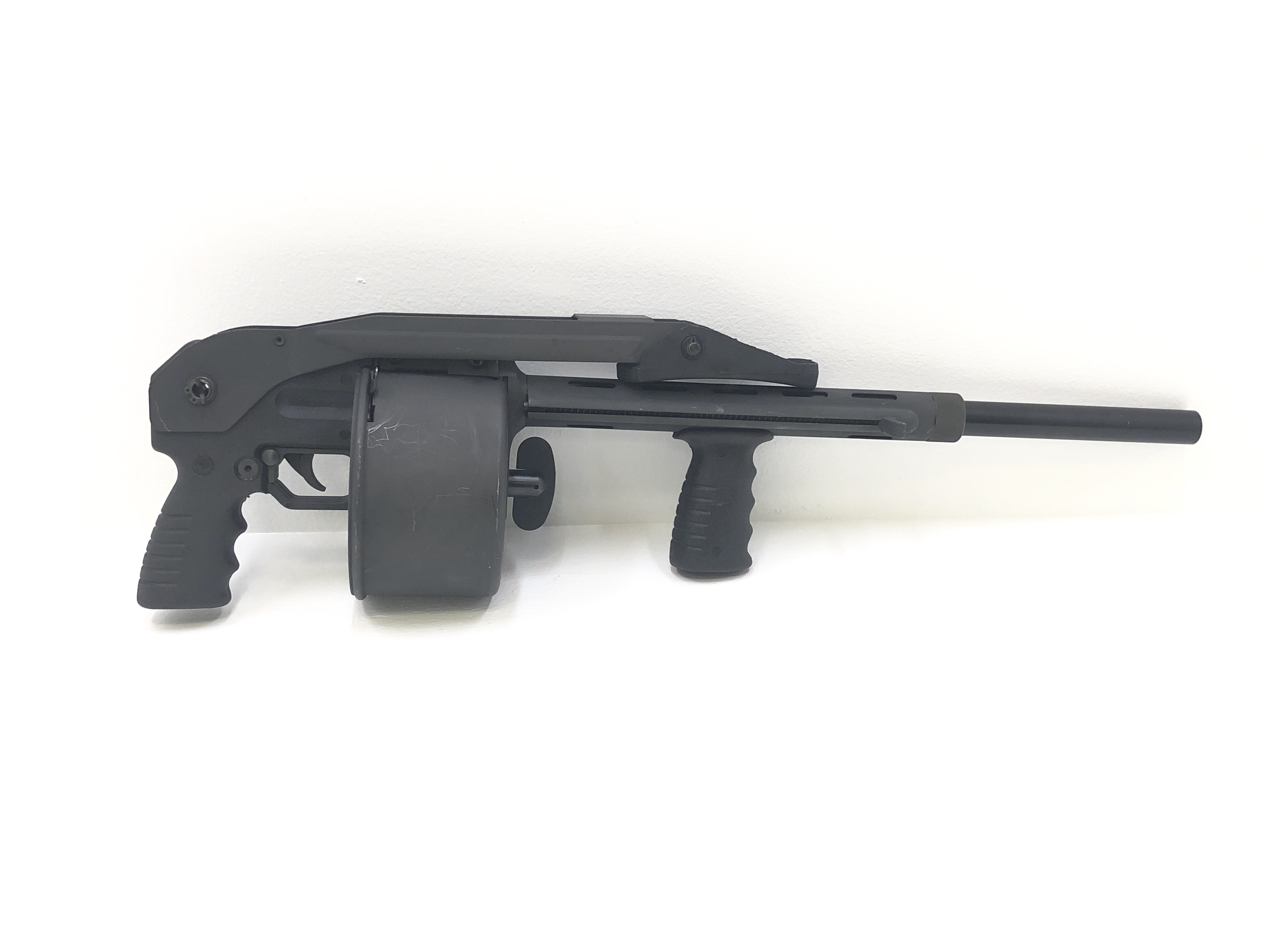
Controversy and Regulation: The Armsel Striker shotgun, including its “Street Sweeper” variant, gained attention due to concerns about its potential misuse. Its capacity to fire multiple shots without reloading led to calls for regulation. In response to these concerns, the shotgun was classified as a “destructive device” under U.S. law, subjecting it to strict regulations.
Historical Context: The Armsel Striker shotgun emerged in the late 1980s and was marketed as a versatile firearm for law enforcement, security, and military use shop at marlinriflesstore.com However, due to its design and capabilities, it also attracted attention from legislators and advocacy groups concerned about public safety.
Legal Considerations: It’s important to note that the legal status of firearms, including the Armsel Striker shotgun, varies by jurisdiction. Laws and regulations govern their ownership, possession, and use. Always adhere to local laws and regulations when dealing with firearms.
Please remember that discussing firearms should be done responsibly and within the context of legal and safety considerations. If you have any specific questions or would like further information, feel free to ask shop at marlinriflesstore.com
Street Sweeper Armsel Striker Shotgun
The term “Street Sweeper” shotgun is often used to refer to the Armsel Striker shotgun, a unique firearm that garnered attention due to its distinct design and capabilities. Here’s more information about the “Street Sweeper” shotgun:
Design and Features: The Armsel Striker shotgun, commonly associated with the “Street Sweeper” moniker, is characterized by its revolving cylinder design. Shop at marlinriflesstore.com. Unlike traditional shotguns with fixed tubular magazines or detachable box magazines, the Striker utilized a rotating cylinder similar to that of a revolver. This design allowed it to hold multiple rounds in individual chambers, enabling rapid fire without manual reloading between shots. shop at marlinriflesstore.com
Caliber and Ammunition: The Armsel Striker was chambered in 12-gauge, a popular shotgun caliber known for its versatility and effectiveness. It could be loaded with a variety of 12-gauge shotgun shells, including buckshot, slugs, and other types of ammunition.
Purpose and Intended Use: The Striker shotgun was initially developed in South Africa and marketed for law enforcement, military, and security applications. Its design offered the potential for close-quarters combat and defensive situations where quick follow-up shots could be crucial.
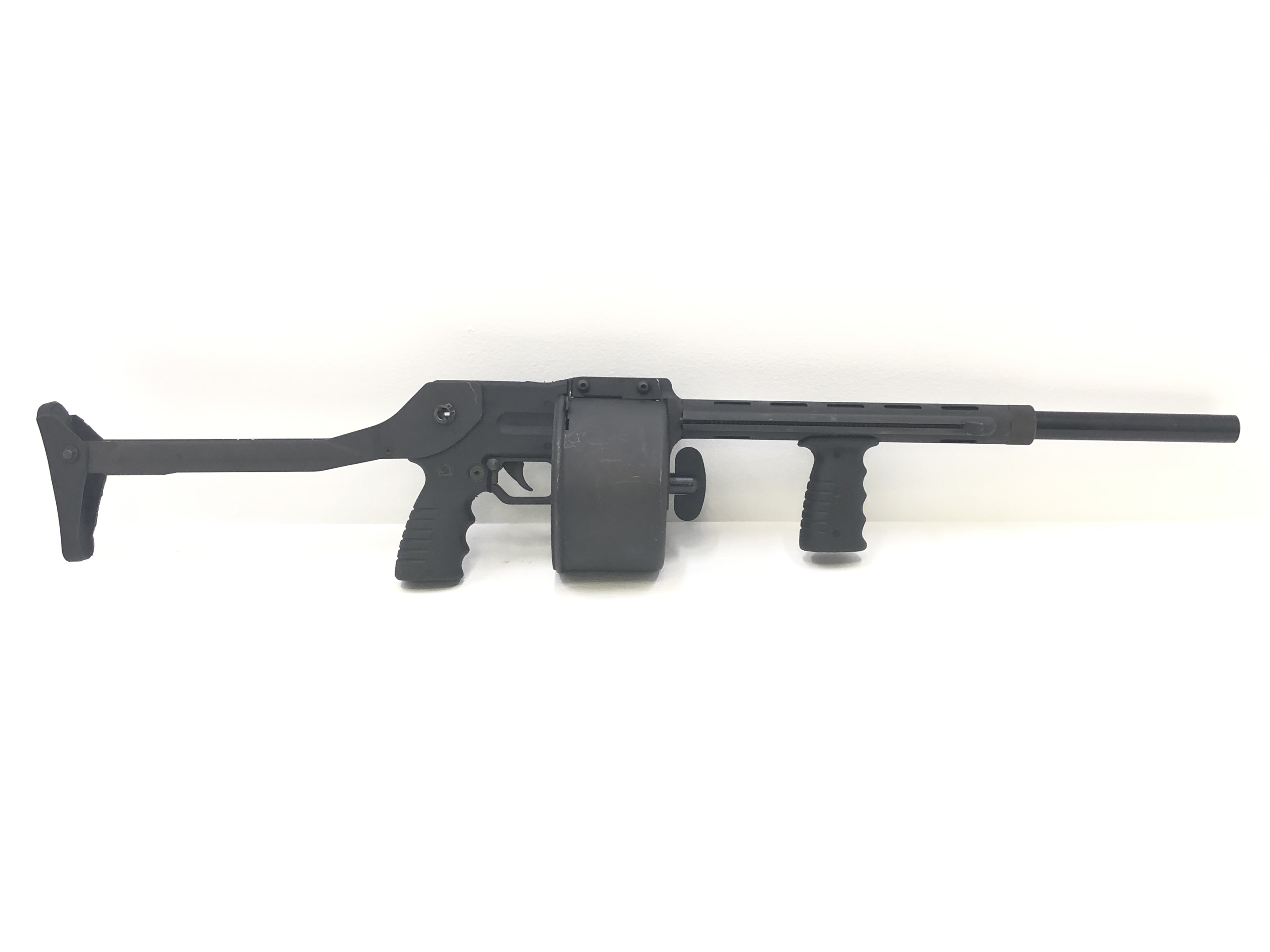
Regulation and Controversy: The Armsel Striker shotgun, often referred to as the “Street Sweeper” due to its revolving cylinder and potential to fire rapidly, raised concerns about its potential misuse. Critics argued that its firepower made it particularly suited for criminal activities. In response to these concerns, the shotgun faced increased regulation in various jurisdictions, including being classified as a “destructive device” under U.S. law shop at marlinriflesstore.com
Legacy and Availability: The Armsel Striker shotgun gained notoriety in the late 1980s and early 1990s. It experienced periods of popularity and infamy due to its unique design and the debates surrounding its regulation. Over time, its availability became limited as legal restrictions impacted its distribution.
Legal and Safety Considerations: It’s important to emphasize that discussions about firearms, including the Armsel Striker “Street Sweeper” shotgun, should always be approached responsibly and within the context of legal and safety considerations. Firearms laws vary widely between jurisdictions, and it’s crucial to understand and adhere to local regulations.
As with any topic involving firearms, understanding the history, design, and legal status of specific firearms is essential for responsible and informed discussions.
marlinriflesstore.com
In the event that you are searching for mass ammo, you went to the right site! We highly esteem offering unquestionably the best arrangements to the most genuine shooters for mass handgun ammunition, mass rifle ammunition, mass shotgun ammunition, and mass rimfire ammunition.
Look at our huge determination of in-stock ammo. We convey every one of the most famous types and a gigantic determination of more specialty types as well. Anything you desire, we have it estimated modest and prepared to transport quick.

The Armsel Striker was designed by Hilton R. Walker, a Zimbabwean (formerly Rhodesian) citizen, in 1981. Walker subsequently emigrated to South Africa, bringing with him the design for the Striker shotgun. His shotgun became a success and was exported to various parts of the world, despite some drawbacks. The rotary cylinder was bulky, had a long reload time, and the basic action was not without certain flaws.
Walker redesigned his weapon in 1989, removing the cylinder rotation mechanism and adding an auto cartridge ejection system. The new shotgun was named the Protecta.
A copy of the Striker was made by the US gunmaker Cobray and marketed as the SWD Street Sweeper from 1989 through 1993.[5]
Design and features
The weapon’s action is similar to a revolver’s, using a rotating cylinder. Since the Striker uses a conventional double-action-only trigger and a very large and heavy cylinder (compared to handguns), Walker added a pre-wound clock-work spring to rotate the cylinder. This made loading slow in exchange for a shorter and lighter trigger pull. The design was changed into having a cocking lever on the right side of the barrel.
The first designs were criticized as having a slow and cumbersome firing process. The shells had to be individually loaded and then the cylinder’s clockwork spring wound. Shells were ejected by an ejector rod along the right hand side of the barrel. The last version has the clockwork winding mechanism removed, the ejector rod replaced by an automatic ejection system, and a cocking lever in the rod’s place that winds the cylinder automatically. The Striker has a twelve-round capacity and short overall length. Compact variants hold 7 rounds.
Availability in the United States
After a proposal by the Brady Campaign in 1993, Treasury Secretary Lloyd Bentsen declared the Striker and Street Sweeper destructive devices under the National Firearms Act the following year, their transfer and ownership becoming regulated by the Bureau of Alcohol, Tobacco, Firearms and Explosives
- Armsel Striker—Hilton Walker’s first design.
- Armsel Protecta—An improved version of the Armsel Striker. Readying the weapon for firing was simplified and the weapon’s reliability was improved
- Armsel Protecta Bulldog—An extremely shortened, stockless version of the Armsel Protecta. It is intended for building entry and vehicular duties
- Sentinel Arms Striker-12—A fully licensed and improved copy of the Armsel Striker for the American market made by Sentinel Arms Co. It was available with an 18-inch barrel and a 7-inch stockless version
- Cobray/SWD Street Sweeper—A lower-end clone of the Armsel Striker, having a limited parts commonality to the original weapons system.
- Cobray/SWD Ladies Home Companion/ LHC. A reduced caliber version of the Streetsweeper. The trigger group is attached to a .410 bore or .45/70 Government cylinder and barrel
Born on the dusty streets of African revolution as the Armsel Striker, the shotgun called the Street Sweeper found its way to the U.S. market through some fairly sketchy people involved in espionage, drug dealing, and tax evasion.

The Armsel Striker was a 12-gauge, 12-round revolving cylinder shotgun developed by Hilton Walker in what was then Rhodesia in 1980. Unlike traditional revolvers which rotate their cylinder mechanically as the trigger is pulled, the Striker’s drum rotates after the trigger is released. As the trigger resets, a tensioned spring in the cylinder housing is briefly allowed to rotate the cylinder to its next position. The tension spring has to be manually tightened via a key on the front of the cylinder housing. Walker moved to South Africa and took his gun design with him, which was eventually adopted by the South African and Israeli police.
In the United States the gun was produced by Cobray and called the Street Sweeper, made and marketed from 1989 to 1994 with slogans like, “It’s a Jungle Out There! There Is A Disease And We’ve Got The Cure.” And “Make your streets safe and clean with the help of ‘The Street Sweeper’!” Cobray also manufactured the MAC-10 and MAC-11 machine pistols.
The ATF declared the Striker and Street Sweeper shotgun “destructive devices” in 1994 due to a lack of “sporting purpose.” Street Sweeper shotguns can be found for sale in Rock Island Auction Company’s Premier and Sporting and Collector Auctions throughout the year.

MAC-10 and Mitchell WerBell
A veteran of the Office of Strategic Services, master of marketing, soldier of fortune, Mitchell WerBell was subterfuge and conspiracy personified. He is also the designer of the modern silencer with an early company called Sionics.

WerBell served with the Office of Strategic Services in the China-Burma theatre in World War II before becoming an advertising executive. He decided to become a mercenary of another kind in the 1960s, designing silencers and working to topple foreign governments with involvement across the Caribbean, Southeast Asia, and Central America. Documents allege WerBell to have been in Dealey Plaza when President John F. Kennedy was assassinated and supposedly supplied silencers used by the gunmen in Dallas. That information didn’t come out until nearly 20 years after WerBell’s death in 1983. He was a known associate of a number of anti-Castro operatives.

Though WerBell claimed he never worked for the CIA, others believed differently. WerBell found himself in Vietnam in the 1960s trying to sell his silencers to the Vietnamese as well as confer with intelligence officials. Prior to a trip in 1969, he met Gordon Ingram about his prototype .45 caliber machine pistol, which WerBell believed paired well with his suppressors. Despite WerBell manufacturing his own suppressors, Ingram designed the suppressor for his machine pistol. WerBell brought Ingram on board and Sionics became Military Armament Corporation in late 1970. The new company needed an updated logo that was part cobra and part moray eel: a “cobray” wrapped around the world.

The MAC-10 was chambered in .45 ACP, while the MAC-11 is a sub-compact version of the MAC-10 and fired .380 ACP ammunition. The MAC-10 got some attention in the 1974 John Wayne movie, “McQ,” where Wayne himself fires the gun.

Military Armament Corporation was a subsidiary of another company, Quantum, that was comprised of millionaire investors. WerBell and Ingram were ousted from Military Armament Corporation in May 1972. Ingram’s M10 and M11 machine pistols were never referred to as the MAC-10 or MAC-11 until Ingram and WerBell’s departure, after which the new monikers became official.
New name or not, the company still couldn’t draw any interest from the military for its machine pistols and went into bankruptcy. At one point, the MAC-10 was described as “fit only for combat in a phone booth.” A trio of former Military Armament Corporation employees, using the name RPB for their initials, bought the rights to make the MAC-10 and MAC-11 in mid-1976. By January, 1977, RPB was hurting for cash flow and struggled to survive until that autumn. The initial owners sold RPB to a group of investors in 1978 which included one Mr. Wayne Daniel. More on him later.
An arms-related indictment in 1973 against WerBell’s son was followed in 1976 by drug charges where the senior WerBell and others, including some former OSS colleagues, were charged with attempting to smuggle marijuana from Columbia. WerBell and the others were acquitted, but the legal issues soured WerBell on the arms business. He turned to security and counter terrorism.

WerBell started a counter-terrorist training center in Georgia called Cobray International Inc. that was recognized in the late 1970s. The training center offered instruction in martial arts, small arms, personal defense weapons, and techniques for persons who must work under the threat of a terrorist attack. Werbell, as the founder, was described in a 1980 Soldier of Fortune article as “an experienced mercenary and weapons inventor.” CIA documents described WerBell as a “wheeler dealer.”
WerBell also associated with fringe politician Lyndon LaRouche and pornographer Larry Flynt, who allegedly paid WerBell $1 million to murder Hugh Hefner, Bob Guiccione, Frank Sinatra, and Walter Anneberg. WerBell died in 1983 shortly after he was allegedly paid for the hits.
Reviews
There are no reviews yet.
Related products
PERCUSSION CAPS & PRIMERS
PERCUSSION CAPS & PRIMERS
CCI Small Pistol Magnum Primers #550 Box of 1000 (10 Trays of 100)
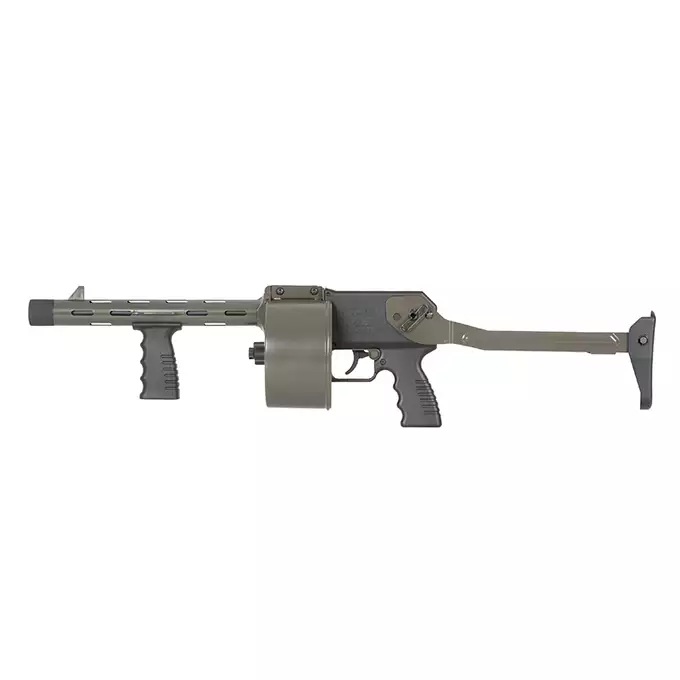
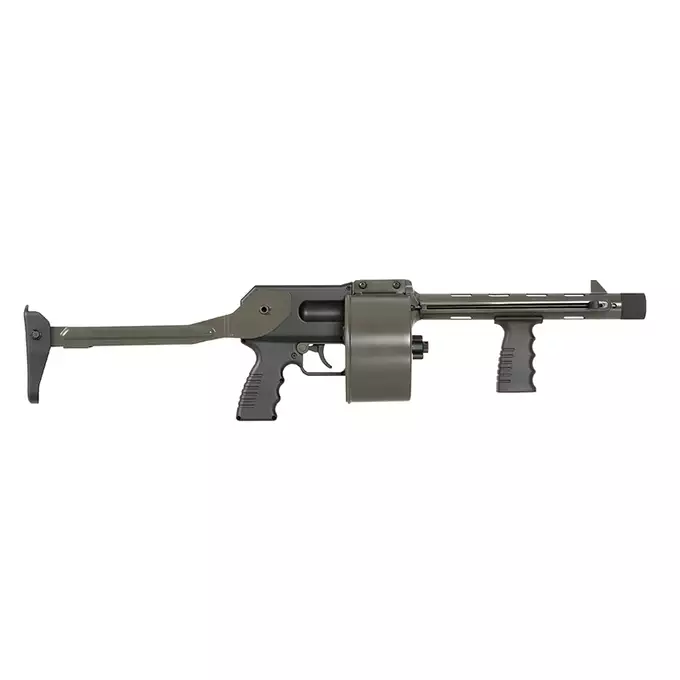
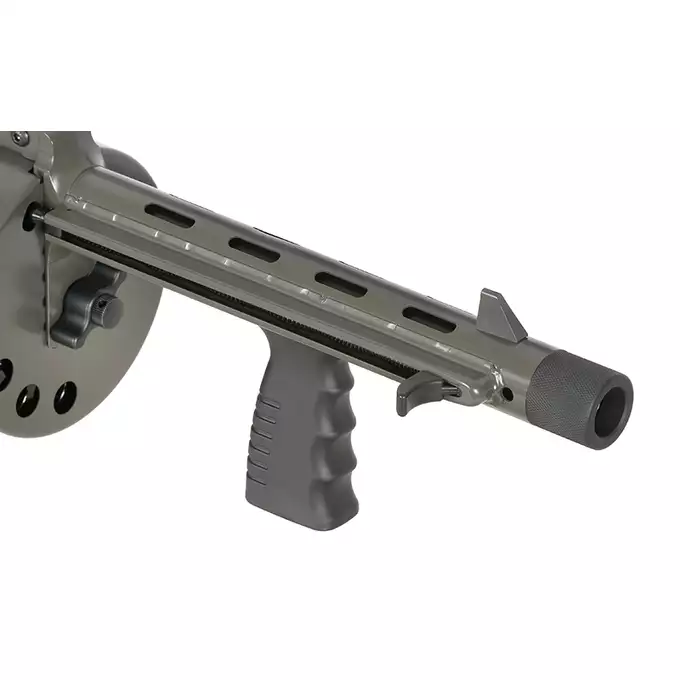
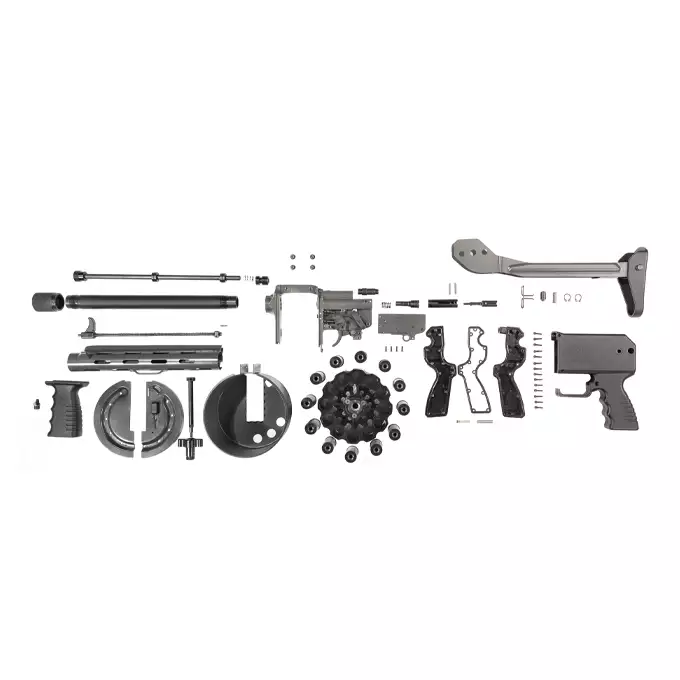

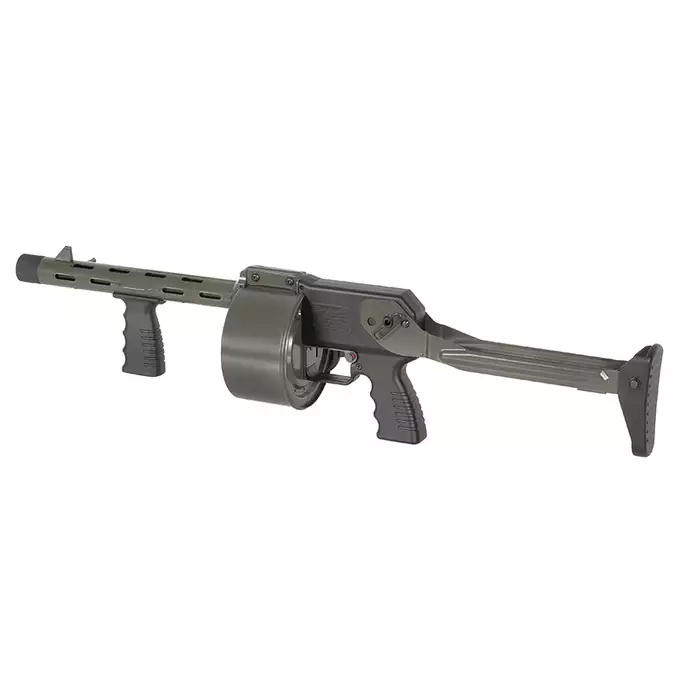

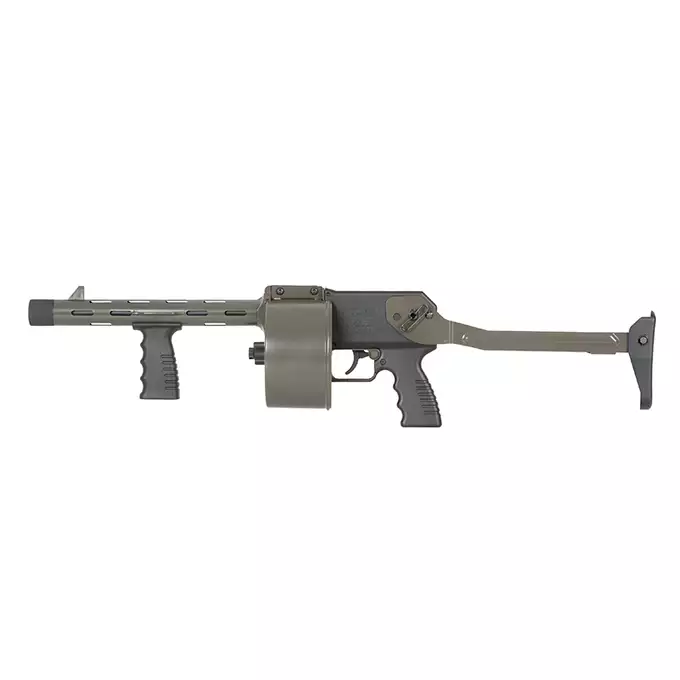
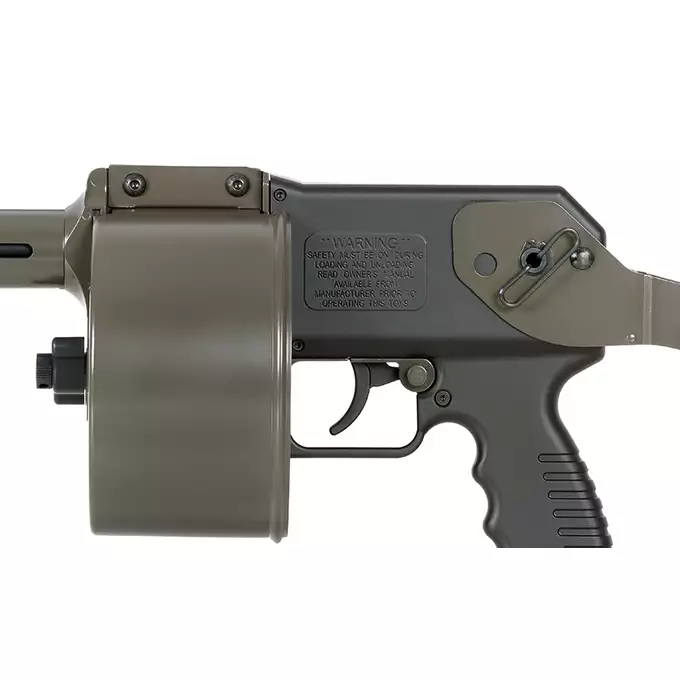

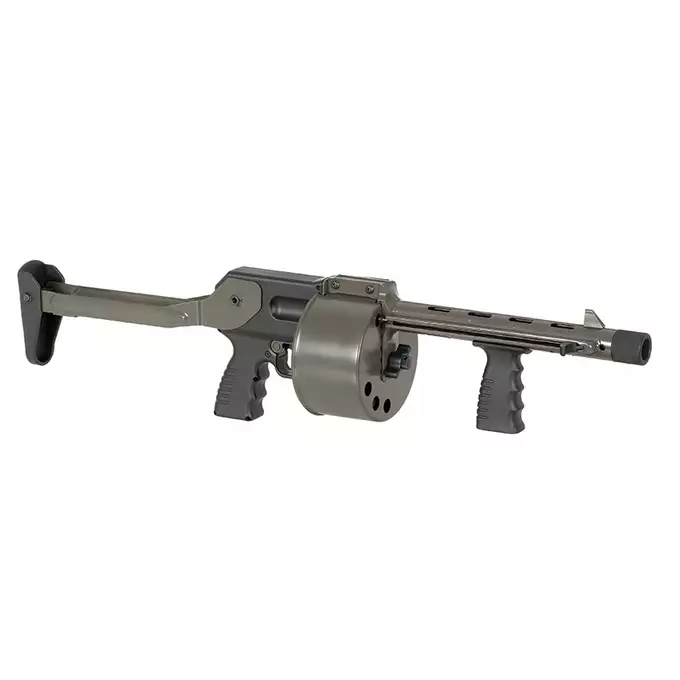
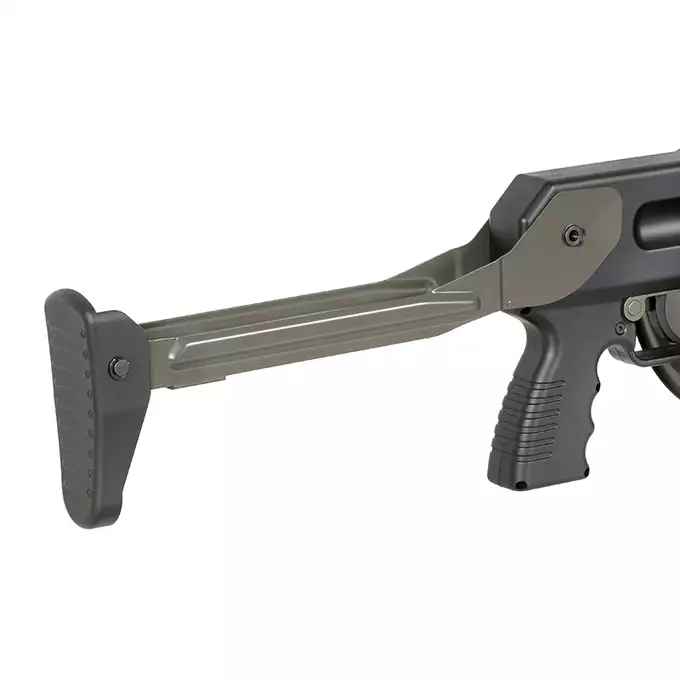
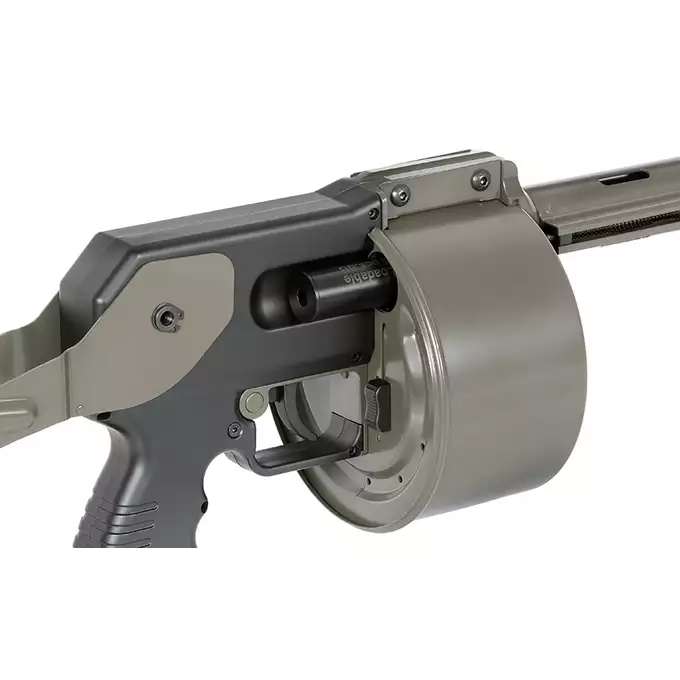

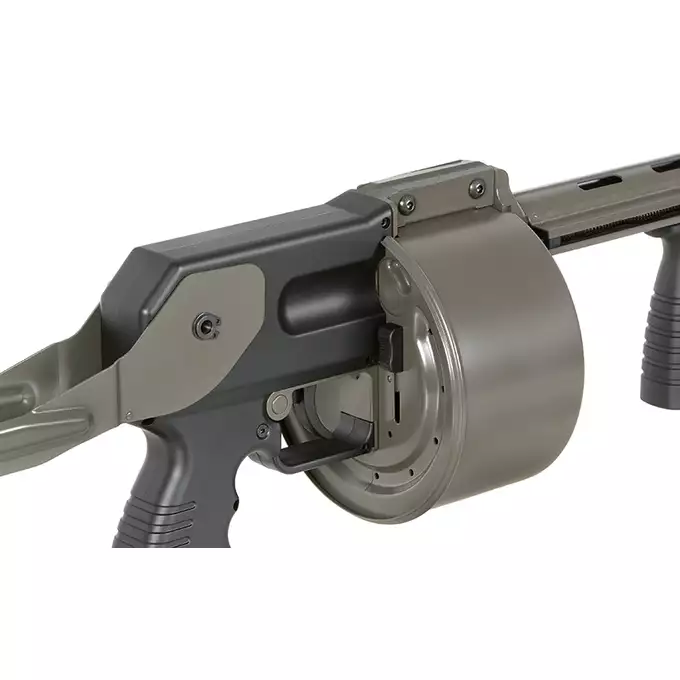
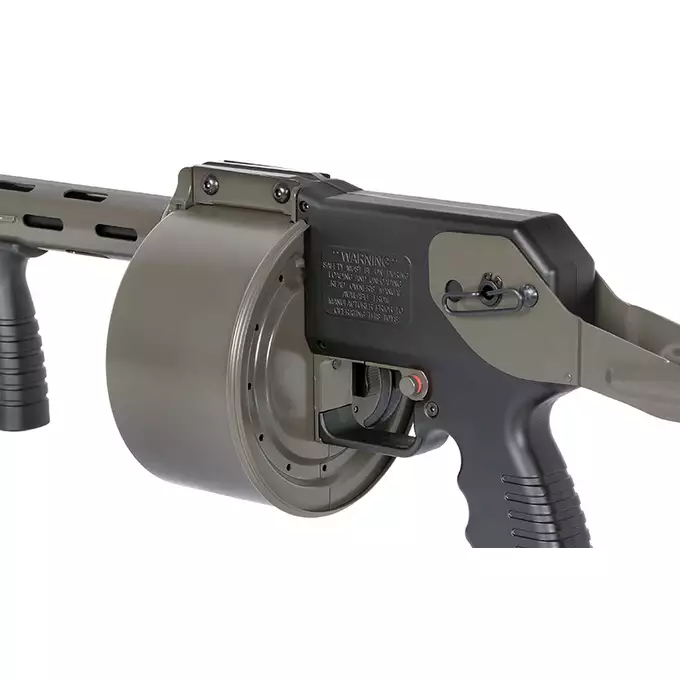
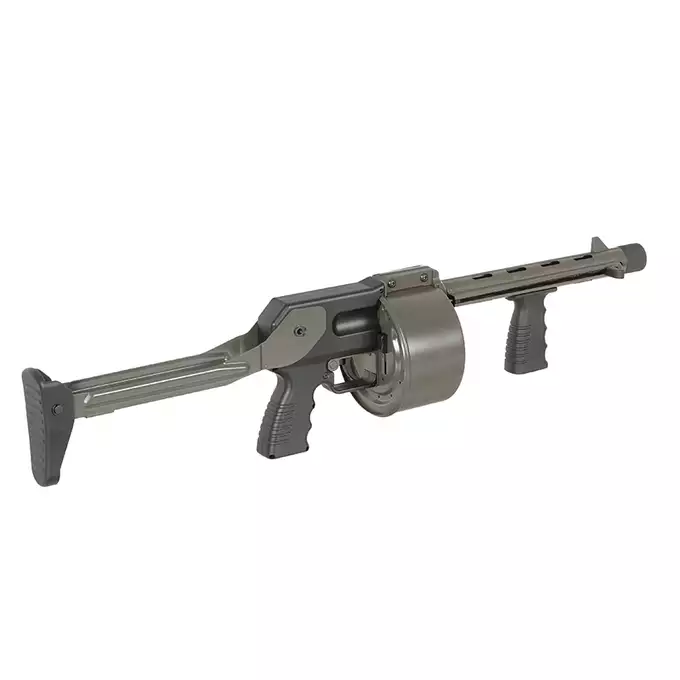

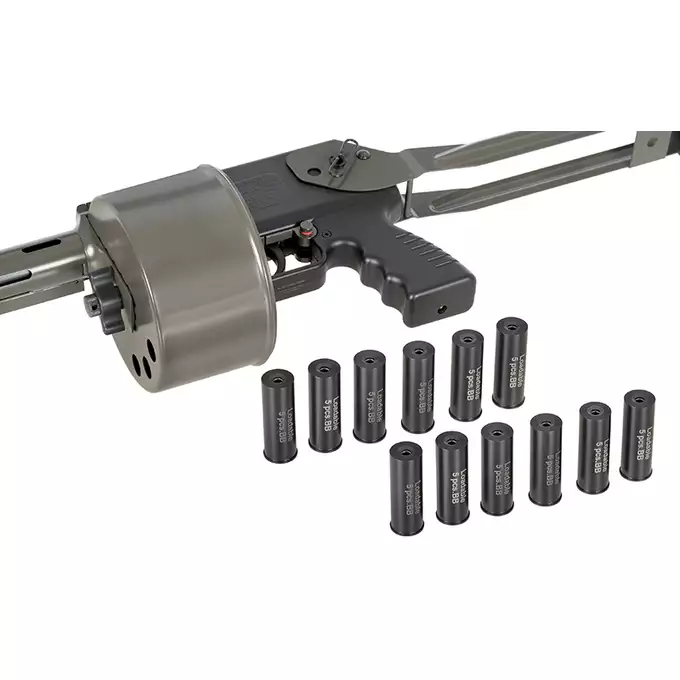
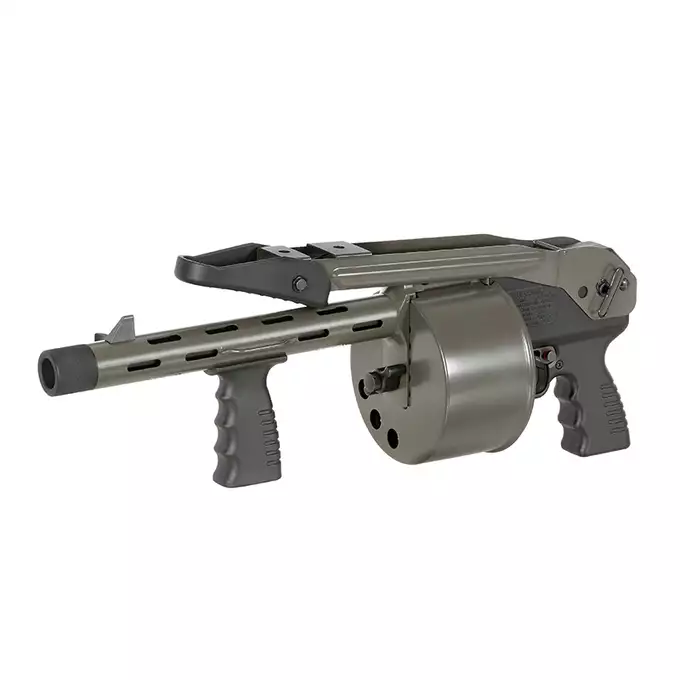


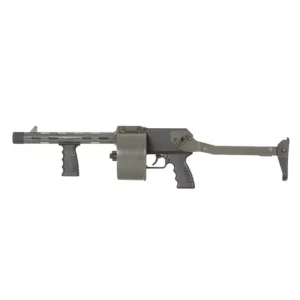
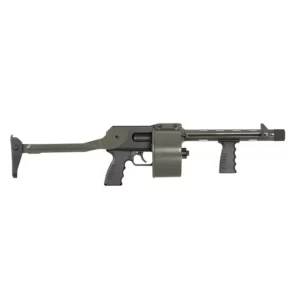

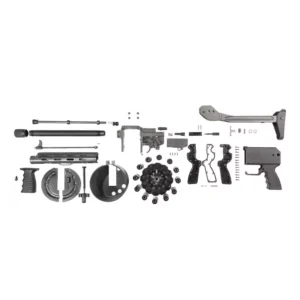
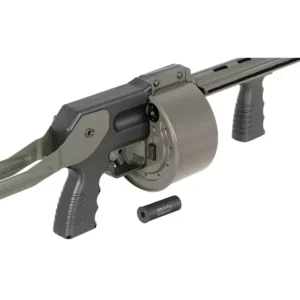
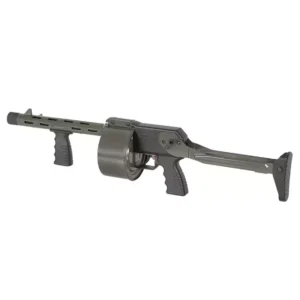
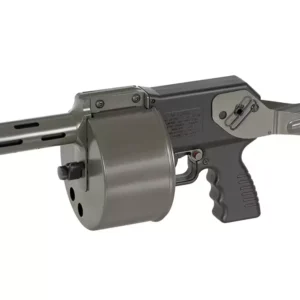

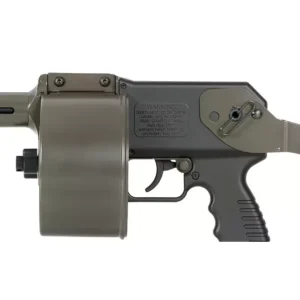

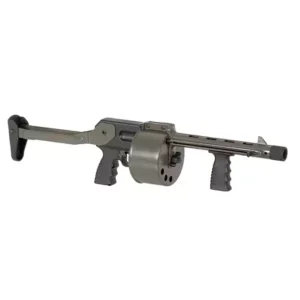
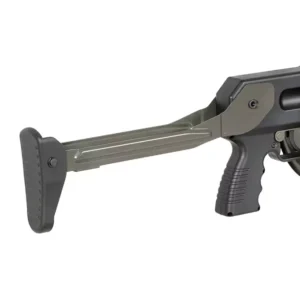
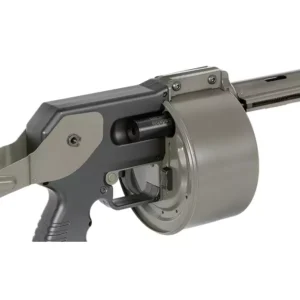

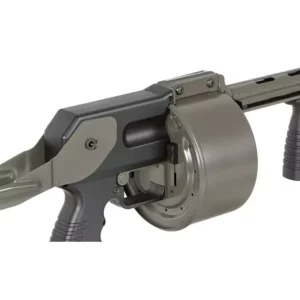
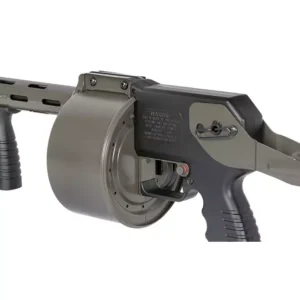




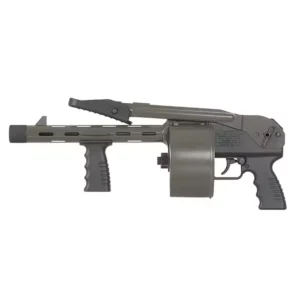
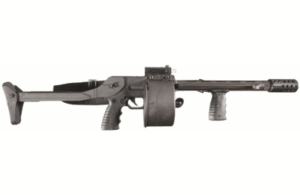

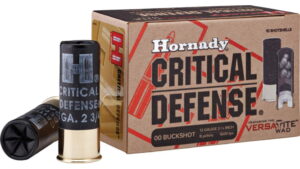
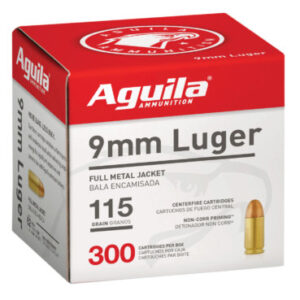
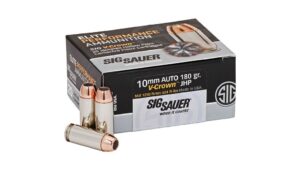
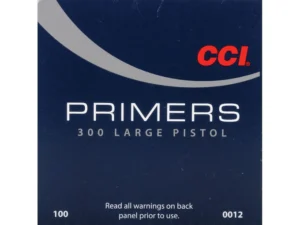
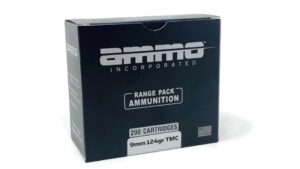
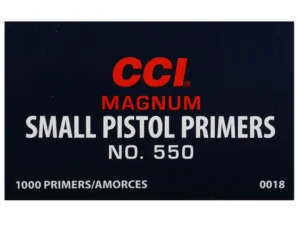
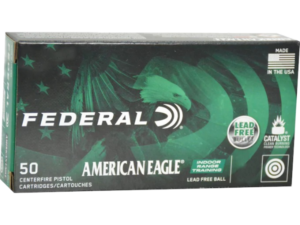
Be the first to review “Street Sweeper Armsel Striker Shotgun”
You must be logged in to post a review.